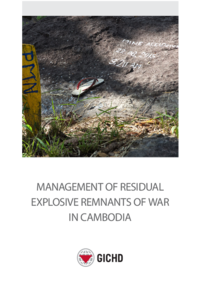In post-conflict countries, there will always be some risk from residual ERW threats when construction is undertaken, as witnessed by ongoing efforts to manage risk from UXO in Europe. Investing in Infrastructure (3i)6 is a development project funded by Australia’s Department of Foreign Affairs and Trade (DFAT) and managed by Palladium International, to provide support for the development of small-scale infrastructure in Cambodia. It is a private-public partnership that seeks to incentivise the Cambodian private sector in the provision of such infrastructure, through the provision of “output-based grants, currently for the provision of electricity and drinking water networks.
3i took the view that to be a responsible partner in the construction of the networks, it needed to assure both itself and DFAT, that everything reasonable and practicable had been done to reduce the risks from ERW threats, to which the operator and their workers were exposed in the course of constructing their networks, demonstrating the concept of “all reasonable effort”.
This GICHD study presents the ERW risk management policy, and the management model that has grown from this, as an innovative attempt to adopt good practice approaches to address residual landmines and ERW in Cambodia. Although lessons are still being learned in real time, the risk approach adopted has proven a cost-effective and efficient method that makes sense of risk in a logical and systematic way, including:
Category: Standards

